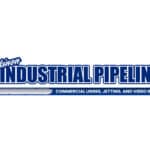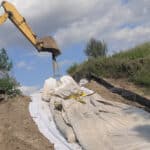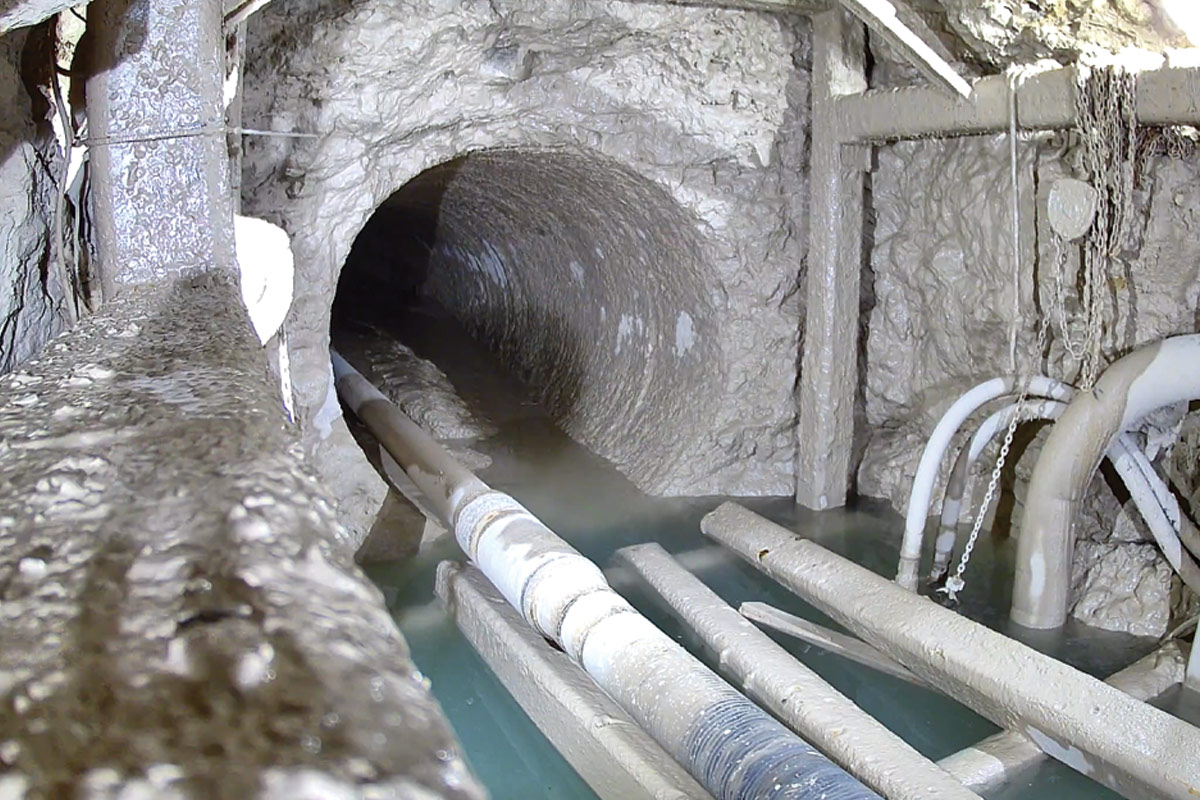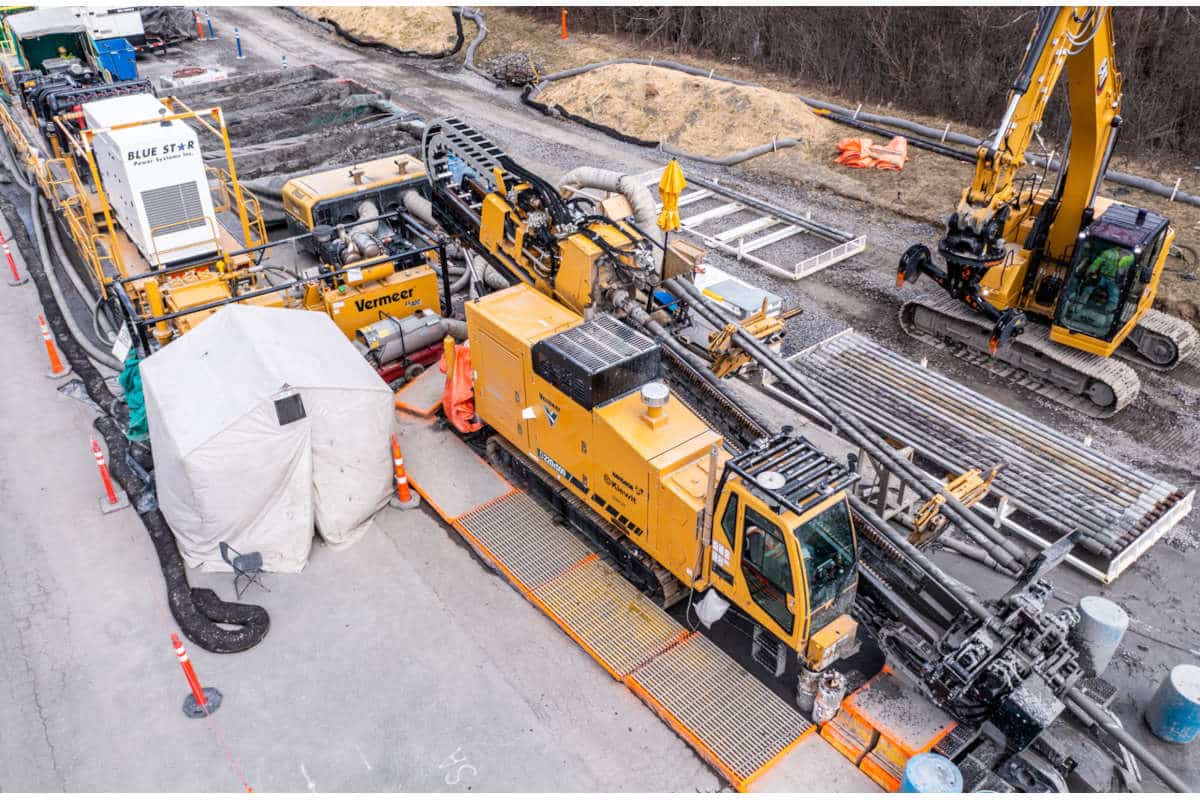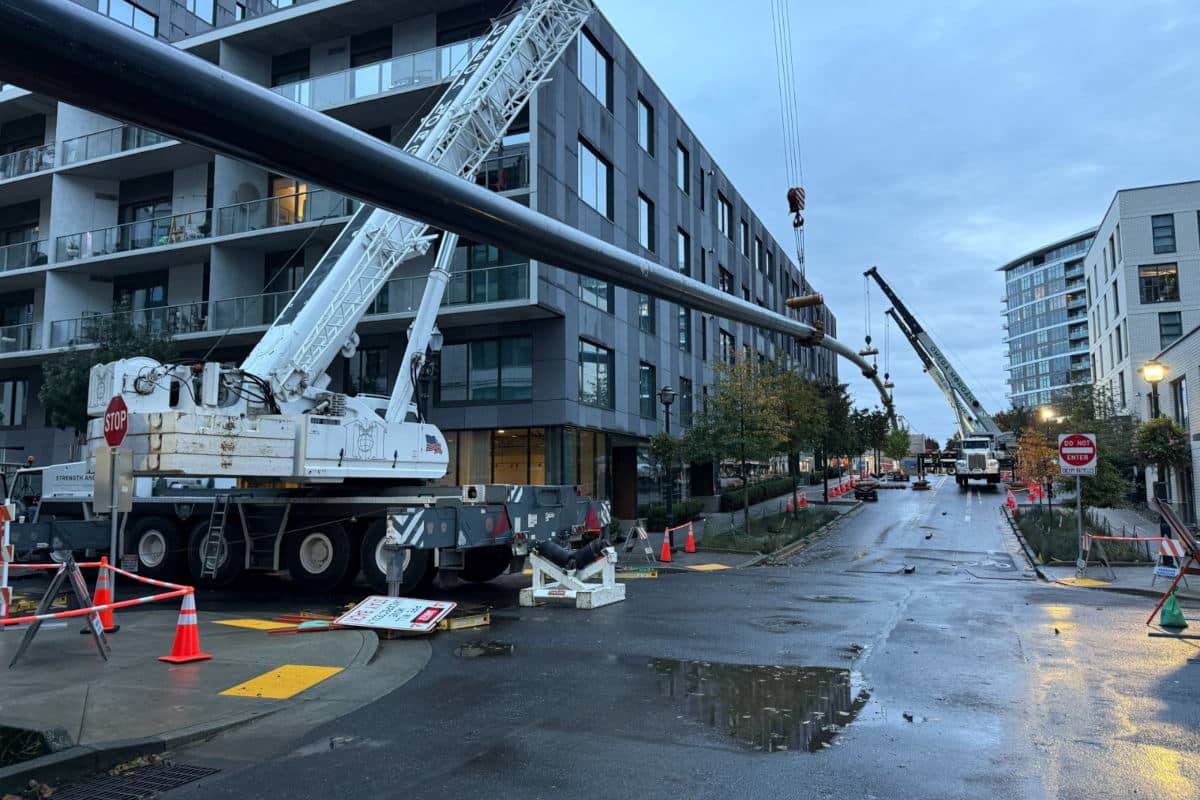
2025 Trenchless Technology New Installation Project of the Year Runner-Up
Portland UG Network Willamette River Crossing
Michels Pacific Energy recently completed a pair of horizontal directional drilled crossings for Pacific Power. This project is integral to the EPA Harbor Superfund Mile 11 Cleanup initiative.
Project Background
The Portland Harbor Superfund Site includes an in-river and an upland portion of the lower Willamette River. This area is contaminated from decades of industrial use along the river. The Portland Harbor Superfund Site was added to EPA’s National Priorities List in December 2000.
The Willamette River is an integral feature of the Portland, Oregon metropolitan area. The harbor is an international portal for commerce; dozens of industries within the site provide economic sustainability to the community.
The Lower Willamette is also a popular area for recreation, including fishing and boating. The river provides a critical migratory corridor and rearing habitat for salmon and steelhead. This includes endangered runs of steelhead and chinook. The area holds great importance to several tribes as a natural and cultural resource.
The eastern portion of the existing Centennial Mills Cable Crossing power line is in an area with contaminated sediments. These contain polychlorinated biphenyls (PCBs) and other contaminants. In January 2017, the EPA recommended that the area be dredged and/or capped. However, neither alternative was feasible with the Centennial Mills Cable Crossing in place.
Pacific Power identified the Willamette Crossing Project as the preferred alternative for providing uninterrupted electric service to the Albina network.
With the new crossing and power in place, the Centennial Mills Cable Crossing can be removed from service. This is part of the remediation activities.
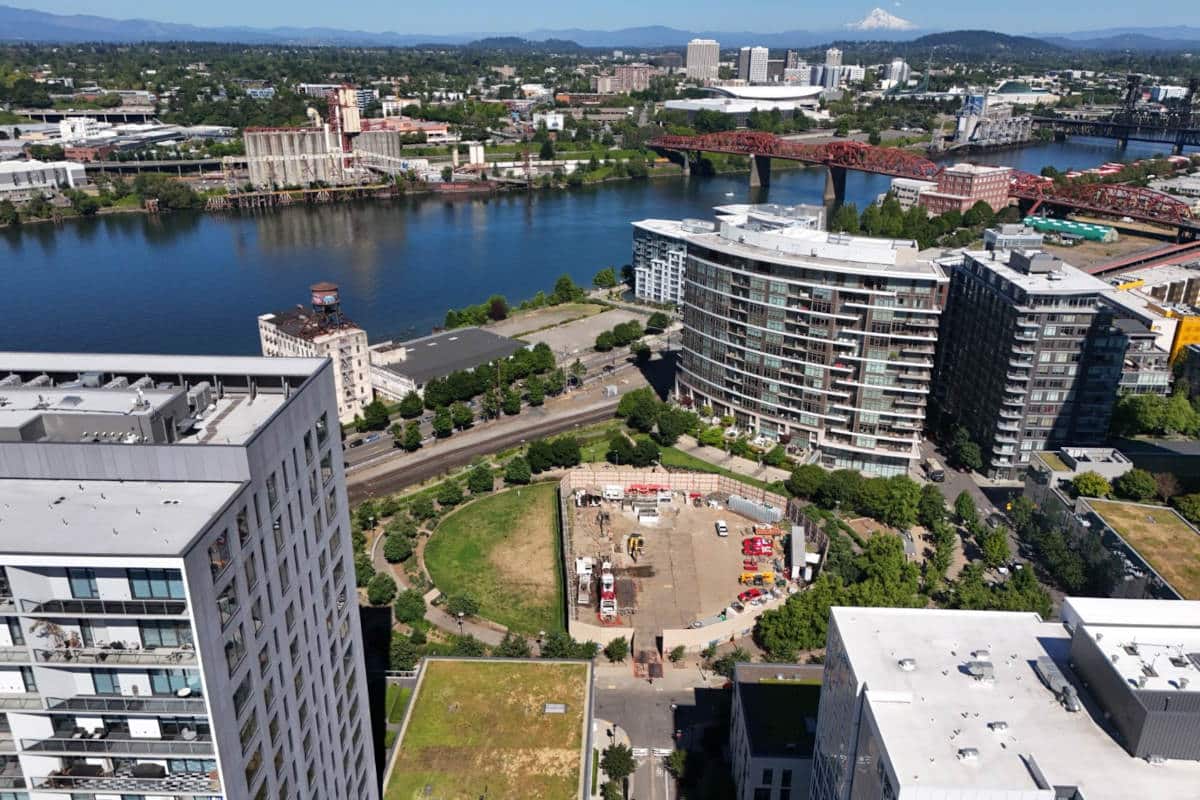
Trenchless Works
The new cables were placed in two 3,000-ft long tunnels. They will be installed via horizontal directional drilling (HDD) under the riverbed. HDD-1 and HDD-2 work areas included The Fields Park (west/exit) and the Portland Public Schools site near the Moda Center (east/entry).
The alignment required vertical and horizontal curves. Drills reached a depth of 253 ft below the river water level, 330 ft below entry point.
At exit, bores were spaced just 5 ft apart. On entry side, they were stacked vertically with 20 ft of separation. Both drills had to cross an existing 14-ft combined sewer outfall tunnel. HDD-2 had just 10.9 ft of clearance from pipe invert to tunnel crown. Furthermore, a narrow 29-ft wide easement between deep foundation piles further constrained alignment tolerances.
Geological Conditions
Geological conditions included contaminated fill, silty/sandy/gravel alluvium, cobbles, and boulders. The Troutdale Formation was also encountered. Gravel was encountered up to a depth of 194 ft, which required surface casing to maintain bore stability. Two 60-inch steel casings (160 LF each) were installed via pneumatic pipe ramming on the west side. This was to isolate the contamination layer. It was followed by 48-inch casings installed using retractable Direct Pipe to reach the consolidated Troutdale layer. The total length of telescoping surface casing installed was 794 lf for HDD-1 and 864 lf for HDD-2.
On the east side, 42-in. steel casings (160 lf each) were installed to reach the Troutdale layer. Drill rigs were then set up on both sides. Survey guidance was used for an intersect. After intersecting, 600-lf segments of 24-in. pipe were staged in city streets and pulled back. These were suspended 30 ft in the air. The final lengths were 3,006 lf (HDD-1) and 3,065 lf (HDD-2).
The design intentionally placed the directional drills closer than normal HDD standards. Industry norms call for parallel drills spaced 15 ft apart. This project required “stacking” the drills on the east side and spacing them only 5 ft apart on the west side.
Why Project Is Outstanding
Through the engineer-procure-construct (EPC) model, Michels and AECOM developed an innovative solution to advance large-diameter casing to support HDD operations. The use of telescopic surface casing provided greater stability and enhanced alignment during horizontal directional drilling.
Combining multiple trenchless technologies to overcome challenging geological conditions highlighted the value that the EPC delivery method brings to the client.
A challenge occurred during the final stages of drilling the pilot hole. The pilot hole was near completion, except for a short segment beneath an active railroad crossing on the east side. Railroad flaggers were required before proceeding underneath their tracks.
Flaggers were unavailable for more than two months. There was a risk of leaving the drill stem within the pilot hole, so the team implemented a creative solution. In efforts to maintain pilot hole integrity, a specialized drilling fluid was used. This allowed the borehole to remain open while the team was away. This approach prevented borehole collapse, eliminating the need to reestablish the pilot hole.
An additional engineering challenge involved the installation of electrical duct conduits. This required a 500-ft bend radius. To overcome this, the team developed an alternative to mitigate the challenges. The 48-in. casing was cut before pipe-pull operations. A 500-ft-radius overbend was welded to the end of the pipe string. This overbend was then pulled 24 lf below surface. It accommodated the conduit radius requirements and reduced excavation depth.
Project Details
PROJECT OWNER: Pacific Power (A Division of PacifiCorp)
ENGINEER: AECOM
CONTRACTORS: Michels Pacific Energy Inc. (general contractor); Michels Trenchless Inc., Michels Pipeline Inc. and DDJ Welding (subcontractors)
SUPPLIERS & MANUFACTURERS: Underground Solutions (FPVC)
Latest Posts
- Sarkinen Industrial Pipelining Expands Services
- Ensuring Quality and Longevity in UV-Cured CIPP Liners
- CIPP Collaboration Restores Major MDOT Culvert Crossing
- Utility Investigation School Slated for January
- AEM Inducts 2025 Hall of Fame
Next Up
HDD Academy | February 19-20, 2026 | Scottsdale, Arizona | Learn more

